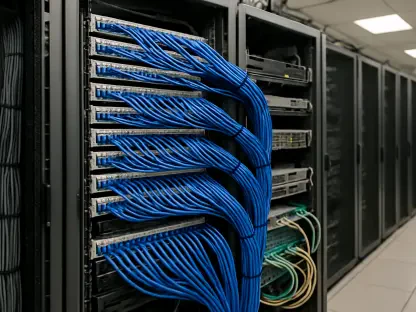Supply chain breaches are occurring with alarming frequency, impacting industries globally. Imagine a bustling port where thousands of containers are temporarily frozen in place due to a cyberattack. This pause threatens not just the shipping schedules but also the economic lifeline for numerous companies and countries. Such scenarios are no longer just hypothetical; cyber threats to supply chains are real and aggressively penetrating networks.
The Growing Importance of Securing Global Chains
Global supply chains form the backbone of modern enterprise operations, seamlessly connecting markets across different geographies. However, according to recent data, these vital networks face cyberattacks at a staggering rate. Every enterprise connected to these chains is potentially at risk, exposing vulnerabilities that can disrupt production lines, delay deliveries, and undermine the trust foundation of global commerce. Trends in cybersecurity continue to point toward an evolving and increasingly sophisticated threat landscape targeting these channels.
Navigating the Cyber Threat Landscape in Supply Chains
Different forms of cyber threats assail supply chains today, with ransomware, malware, and phishing topping the list. Each attack carries substantial consequences. A single ransomware incident can halt an entire logistics network, as perpetrators encrypt data and demand hefty ransoms. Malware invasions, on the other hand, may stealthily collect sensitive information over time. The intricate web of suppliers and sub-suppliers compounds the difficulty in defending against these threats, as ensuring consistent security measures across all parties proves challenging.
Insights from the Experts: Red Flags in Supply Chain Security
Cybersecurity experts frequently emphasize the pressing need to address glaring vulnerabilities within supply chain networks. Their findings often highlight weak points that remain unaddressed by enterprises as well as their vendors. Case studies from industry professionals reveal that breaches often stem from simply overlooked security gaps or outdated technology, placing critical links in the chain at risk. Research continually underscores the need for robust security practices and effective collaboration among stakeholders, yet these remain inadequately implemented.
Proactive Measures: Strengthening the Shields of Supply Chain Networks
Implementing practical defenses requires a collaborative effort among purchasing, IT, and network security teams. Techniques such as utilizing zero-trust networks and network segmentation provide critical layers of defense. Moreover, regular security audits and maintaining robust sub-vendor visibility are essential components of a comprehensive security strategy. For companies, establishing clear vendor management frameworks ensures that all parties adhere to stringent security protocols, ultimately fortifying entire networks against potential breaches.
Navigating Toward a Resilient Future
Securing global supply chains against cyber threats is an ongoing necessity. As cyber threats adapt and evolve, so must the strategies to combat them. Enterprises should consider adopting not only technological solutions but also develop team-based strategies, involving key personnel across different departments to collaborate seamlessly. Understanding the dynamic nature of these threats and remaining vigilant is imperative. By doing so, companies not only safeguard their operations but also preserve the integrity and trust inherent in global supply networks.









